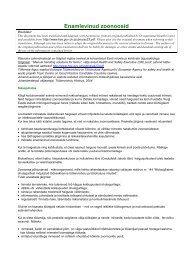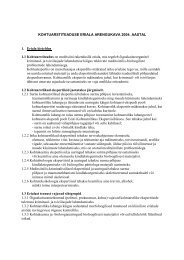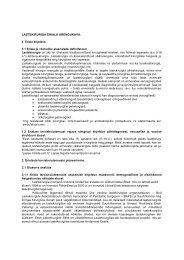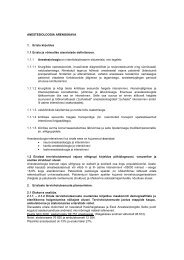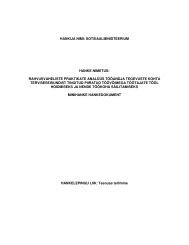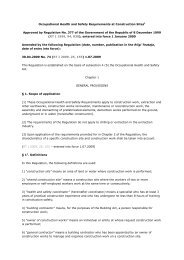SErIES IAEA HumAn HEAltH SErIES IAEA Hum
SErIES IAEA HumAn HEAltH SErIES IAEA Hum
SErIES IAEA HumAn HEAltH SErIES IAEA Hum
Create successful ePaper yourself
Turn your PDF publications into a flip-book with our unique Google optimized e-Paper software.
—Digital image receptors (computed radiography (CR) or direct digital);<br />
—Image displays (film viewing boxes, workstations and display monitors);<br />
—Hard copy devices (printers and film processors);<br />
—Digital scanners and storage systems.<br />
The following principles and criteria for good practice should be applied as<br />
appropriate to all of the above mentioned modalities and equipment.<br />
5.1.1. Infrastructure<br />
A supportive infrastructure is essential to produce the good quality patient<br />
images needed for accurate diagnosis, which are obtained with low radiation dose<br />
in an environment that is safe for patients, radiology personnel and the public.<br />
This infrastructure includes the organizational structure, personnel, management<br />
and documentation.<br />
5.1.1.1. Organizational structure<br />
A medical physicist, with competence in diagnostic radiology, has primary<br />
responsibility for most of the technical aspects within radiology, including<br />
equipment QA, dosimetry and calibration, and, furthermore, the medical<br />
physicist provides specialist expertise with respect to radiation protection of the<br />
patient.<br />
The medical physicist may also be appointed as the facility’s radiation<br />
protection officer 7 (RPO). The RPO has responsibility for radiation protection of<br />
staff and the public, but not for radiation protection of patients. However, in some<br />
institutions, the RPO may be a health physicist and not a medical physicist and,<br />
furthermore, may be external to the radiology facility. If the RPO is not a member<br />
of the radiology facility, a suitably trained staff member should be appointed as<br />
deputy to the RPO and maintain regular, close contact with the RPO. The RPO<br />
should report to a Radiation Safety Committee. This committee should meet<br />
regularly, and be responsible for the radiation safety policy of the institution/<br />
facility, its monitoring and its evaluation. There should be a manual covering all<br />
relevant aspects of radiation protection (see Sections 5.1.1.4 and 3.1.2). A<br />
7<br />
A person technically competent in radiation protection matters relevant for a given<br />
type of practice, who is designated by the registrant or licensee to oversee the application of the<br />
relevant requirements established in international safety standards. Such a person is also<br />
sometimes known as a radiation safety officer.<br />
45




